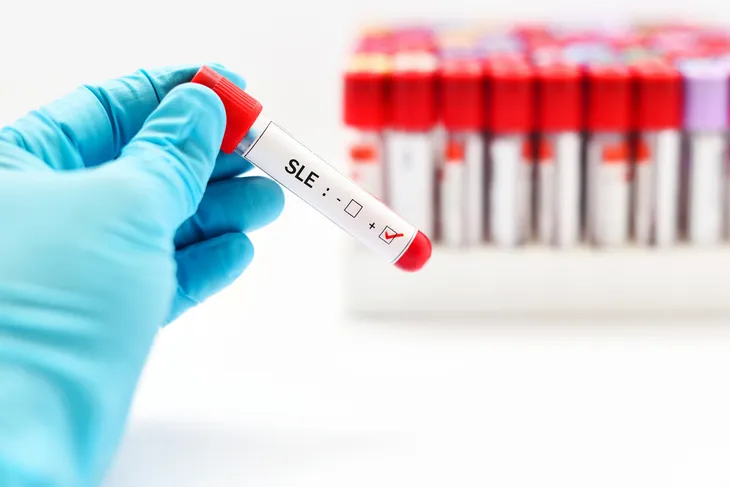Unlike osteoarthritis, inflammatory arthritis isn’t caused by wear-and-tear of the cartilage in your body’s joints. Instead, it occurs due to autoimmune disorders, in which the body’s immune system attacks its healthy cells, resulting in damaged tissue.
Arthritis-Health.com says these damaged tissues are what cause the “deformity, instability, and scarring within the joints” that are characteristic of inflammatory arthritis. While there are many different types of inflammatory arthritis, the following seven are the most common.
Rheumatoid Arthritis
Rheumatoid arthritis is by far the most common type of inflammatory arthritis, affecting approximately 1 to 2 million people in the United States alone. In those with rheumatoid arthritis, the Mayo Clinic says the immune system “attacks the lining of the joint capsule,” called the synovial membrane.
As the synovial membrane is attacked, the source says it “becomes inflamed and swollen,” which causes the pain and discomfort associated with the condition. Over time, the cartilage and bone within the joint can become permanently damaged. This most commonly occurs within the hands, wrists and feet. Check out these rheumatoid arthritis treatment options!
Ankylosing Spondylitis
Ankylosing spondylitis is a type of inflammatory arthritis that primarily affects the joints in the spine, causing pain and stiffness in areas including the lower back, buttocks, and hips. According to the Arthritis Foundation, these symptoms tend to develop “slowly over several weeks or months.”
Arthritis Research UK adds that ankylosing spondylitis can affect other areas of the body as well, causing chest pain, inflammation of the eyes or bowels, as well as fatigue. Although the condition can affect anyone, the source says it most commonly affects men in their late teens or 20s, particularly if they have a gene called HLA-B27.
Psoriatic Arthritis
Approximately 30-percent of people who have psoriasis (a condition that causes itchy, scaly skin) will also develop psoriatic arthritis. Symptoms of this type of inflammatory arthritis typically include painful, swollen, or stiff joints, particularly in the ankles, knees, fingers, toes or lower back.
Swollen fingers or toes are also common, and are caused by inflammation in the joints and tendons. Other characteristics of psoriatic arthritis include pain in the ligaments or tendons, discoloration, and thickening of the nails, and fatigue.
Juvenile Idiopathic Arthritis
Approximately 300,000 children in the United States have some form of arthritis, of which juvenile idiopathic arthritis is the most common. According to KidsHealth.org, the onset typically occurs between the ages of 6 months and 16 years old, and the initial symptoms often include “joint pain or swelling or warm joints.”
Although there is presently no cure for the seven different types of juvenile idiopathic arthritis, the Arthritis Foundation says that, with an early diagnosis and aggressive treatment, remission is possible.
Systemic Lupus Erythematosus
Inflammatory arthritis is among the most common symptoms that develop in people with lupus—an autoimmune disease that Healthline.com says “can affect your joints and many types of connective tissue in your body.” The source adds that the condition can also cause damage to the skin, lungs, kidneys, brain, and other organs.
Other symptoms commonly associated with systemic lupus erythematosus include joint pain, a butterfly-shaped rash on the face, hair loss, shortness of breath, and blood disorders, such as anemia, leukopenia (low white blood cell count), and thrombosis (blood clots).
Gout
Affecting an estimated 3.9-percent of American adults, gout is caused by the accumulation of urate crystals within the joints. A person’s risk of developing this type of inflammatory arthritis is affected by factors such as age, diet, alcohol use, and whether or not it runs in their family.
An incredibly painful condition, Healthline.com says symptoms of gout can include “redness, swelling, and intense pain in your toes, feet, ankles, knees, hands, or wrists,” although the joint in the big toe is most commonly affected. Check out these tips for managing a gout attack!
Infectious or Reactive Arthritis
The term “infectious arthritis” refers to several different conditions that are caused by bacterial or viral infections. According to Arthritis-Health.com, these conditions include “rheumatic fever, Lyme disease, fungal arthritis, Fifth disease, tuberculosis arthritis, gonococcal arthritis, Cogan’s syndrome, Pott’s disease, spirochetal arthritis, and Sydenham’s chorea, among others.” In addition to joint pain and swelling, infectious arthritis often includes symptoms such as a fever and chills.
Reactive arthritis, on the other hand, often occurs when “an infection in one part of your body causes inflammation in a joint elsewhere in your body,“ says Healthline.com. The source adds that the infection tends to start “in your bladder or sexual organs.”










